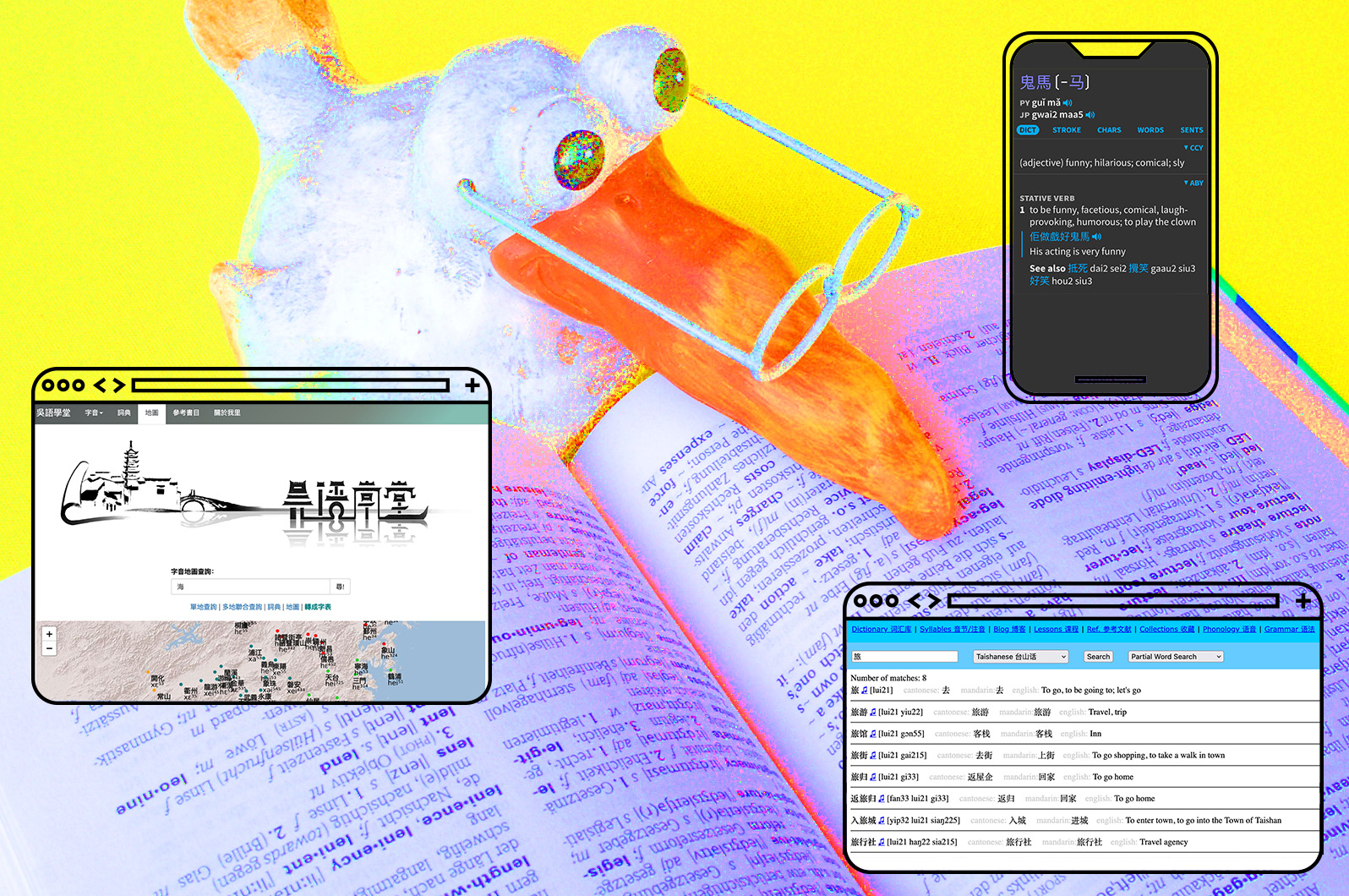
As we say in The Hanmoji Handbook, “Here’s the thing about spoken Chinese: it refers to many different languages — dozens, in fact — used by people in various parts of China, today and throughout history.” So when we discovered that the United Nations created an official, singular Chinese Language Day (celebrated annually on 4/20 of all days), we were a little perplexed. But here’s an idea for next year: let’s call it Chinese Languages Day instead, and use the event to highlight the plurality of Chinese expression around the world.
To that end, we wanted to share the hard-to-find resources that enabled us to show the breadth of spoken Chinese in our book: the online dictionaries for the regional, non-official languages of China and its diaspora. These spoken languages are increasingly sidelined in the recent standardization and nationalization of Mandarin, as Oiwan Lam notes in Global Voices. Keep in mind, though, that the standardization of written Chinese started millennia earlier than the spoken form, so all of these non-Mandarin languages are still written with either Simplified or Traditional Chinese characters. There are some variations in specific words and phrases chosen for written expression, especially in colloquial, but for the most part, the written script is the same. These dictionaries can help us understand the nuances and variations.
Cantonese dictionaries
Pleco ⭐️
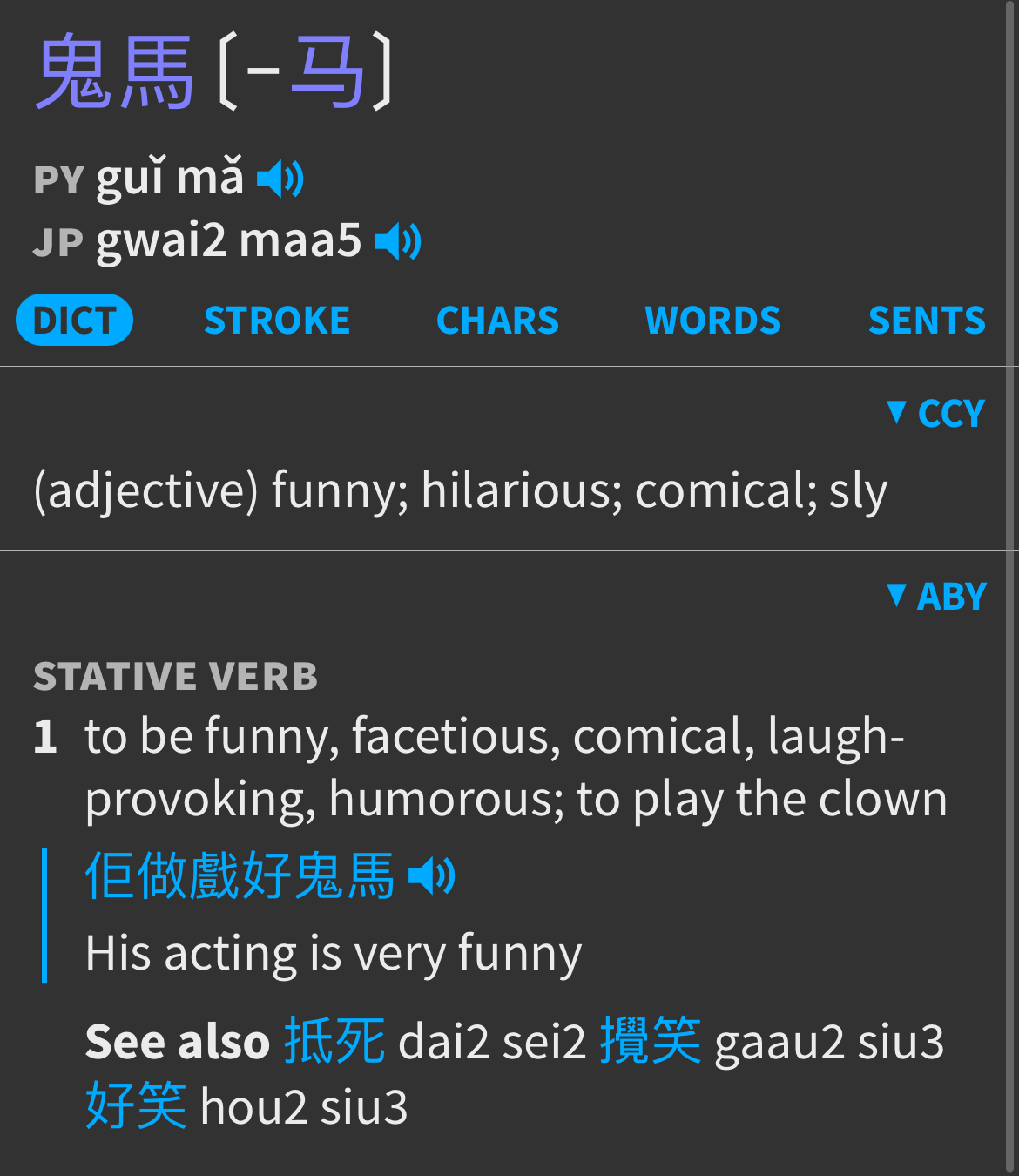
- Format: Mobile app
- Features: Dictionary, OCR, flashcards, and more!
- Definitions: English
- Phonetic guides: Mandarin, Cantonese
- Audio pronunciation: Mandarin, Cantonese
- Price: Free with paid add-ons
- Launch date: 2000
- Creators: A study abroad student turned software developer turned entrepreneur (see Tech in Asia interview)
Our favorite go-to when it comes to looking up Cantonese words is definitely the Pleco mobile app. Pleco is a tried-and-true powerhouse for your Chinese learning needs. At its core, it’s a Chinese-to-English dictionary, but it also sports features for flashcard memorization and OCR (optical character recognition) document reading. Most importantly, it ships with Cantonese support that can be easily turned on, along with add-ons (both free and paid) that bolster its Cantonese vocabulary. For more details on how to use Pleco for Cantonese, check out Cantoblog’s How to make Pleco into a Cantonese power tool.
MDBG Chinese Dictionary
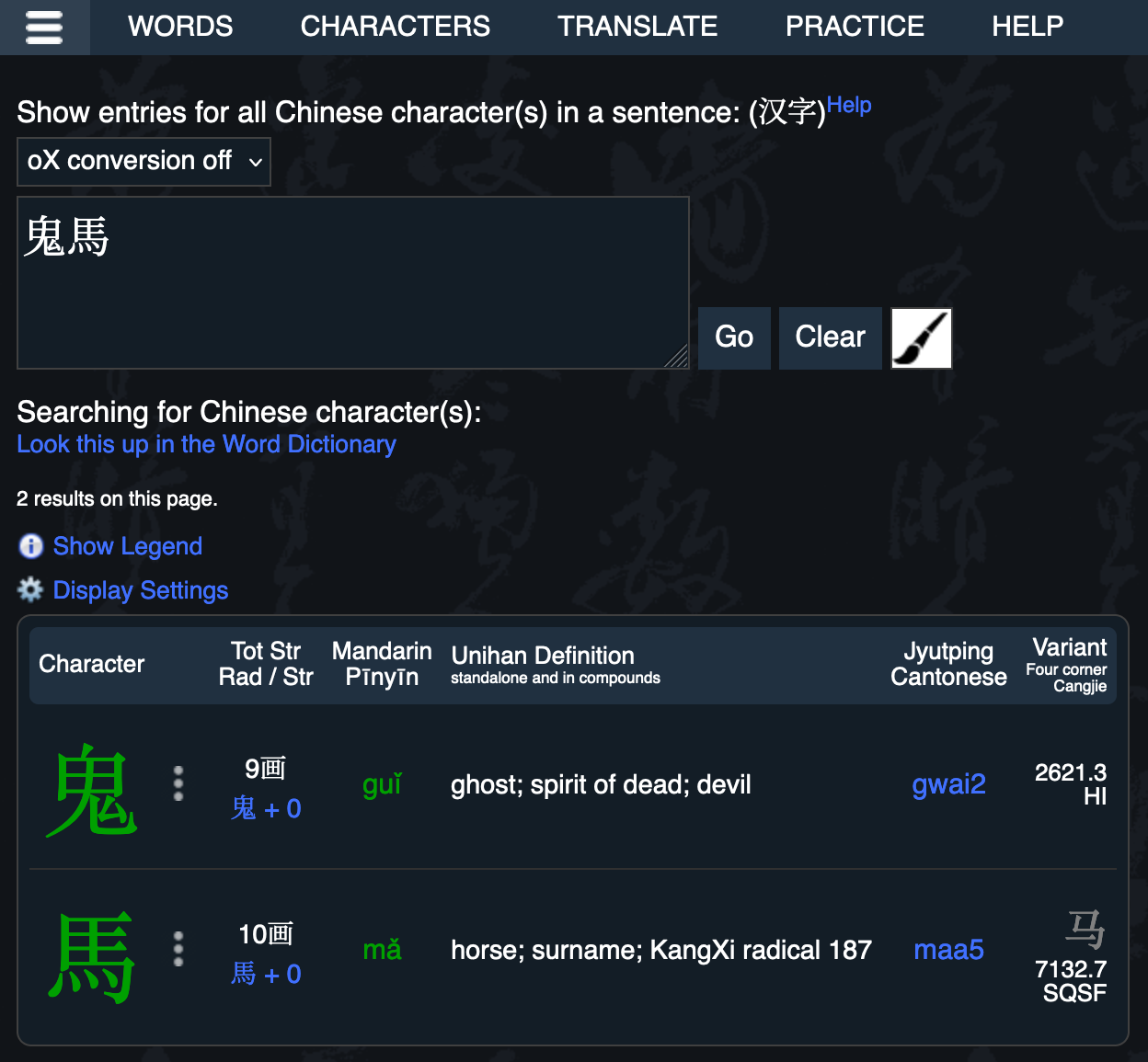
- Format: Website
- Features: Dictionary, flashcards, quiz
- Definitions: English
- Phonetic guides: Mandarin, Cantonese
- Audio pronunciation: Mandarin, Cantonese
- Price: Free
- Launch date: 2003
- Creators: A software developer at a Dutch university
As a backup, and when we’re only on our computers, the MDBG Chinese Dictionary’s character lookup tool also includes results in Cantonese, though its breadth of entries pales in comparison to Pleco’s add-on dictionaries. The MDBG dictionary is based around a public-use, Creative Commons licensed Chinese-to-English dictionary (first created in 1997), which is why it is a free and powerful resource.
Teochew/Chaozhou dictionaries
潮州·母语 (Chaozhou Mogher)⭐
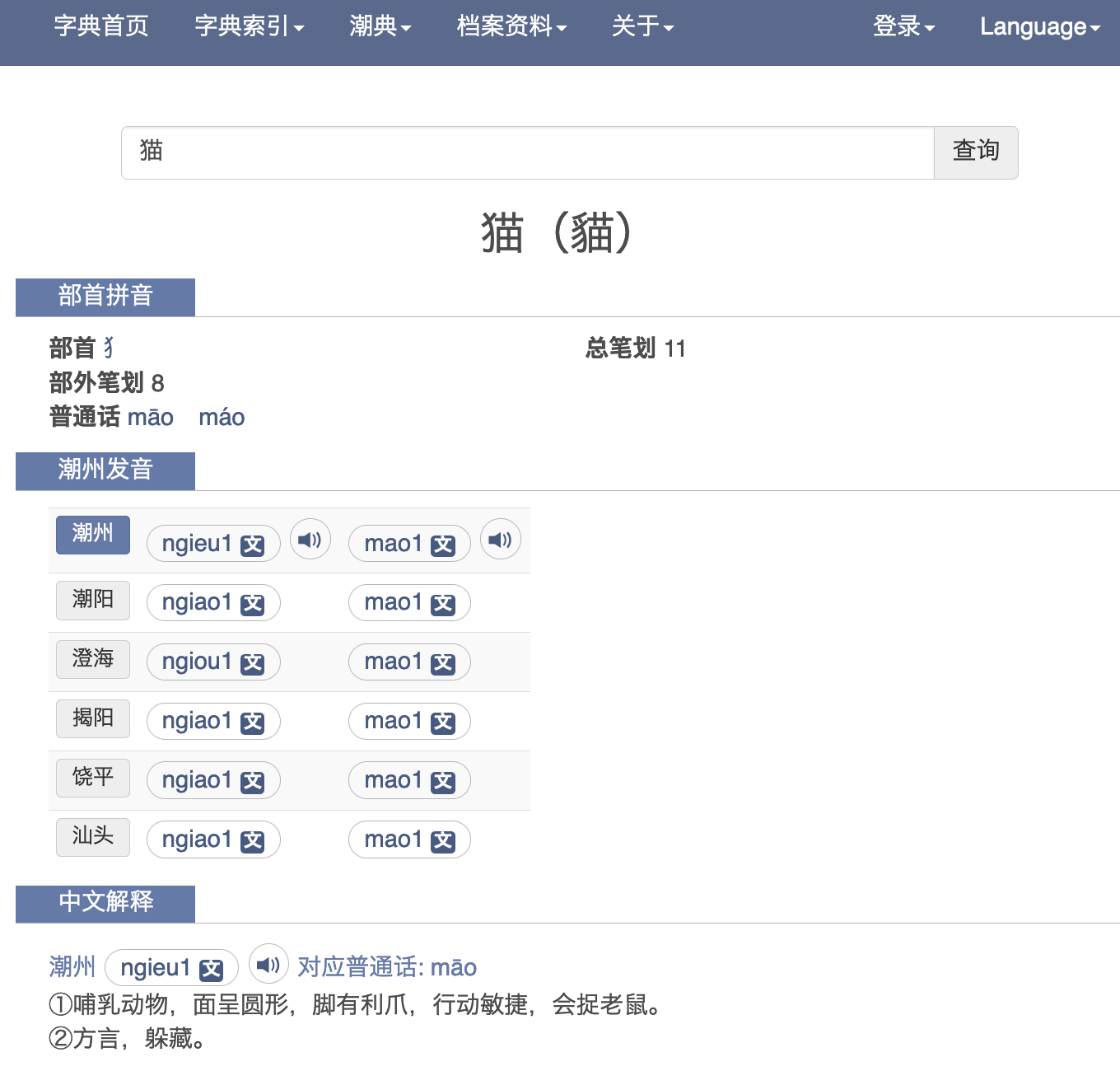
- Format: Website
- Features: Dictionary, word lists, articles
- Definitions: Chinese (with very limited English)
- Phonetic guides: Teochew, Mandarin,
- Audio pronunciation: Teochew, Mandarin
- Price: Free
- Launch date: 2005 (website), 2017 (dictionary feature)
- Creators: Language enthusiasts across China
潮州·母语 (Chaozhou Mogher) is an online resource with depth and history — its website includes both dictionary functionality as well as word lists, a radicals index and a guide to Teochew tones.
潮州音字典 czyzd.com

- Format: Website and mobile app
- Features: Dictionary
- Definitions: Chinese
- Phonetic guides: Teochew, Mandarin
- Audio pronunciation: Teochew, Mandarin
- Price: Free (website) and $2.99 (iOS app)
- Launch date: 2013 (website), 2018 (mobile app)
- Creators: Married couple in the Chaozhou region (see local TV news clip)
潮州音字典 (czyzd.com) comes in both mobile app and website form. The iOS mobile app is available on the Apple App Store, though the Android version only comes via a download-at-your-own-risk file on their website. Their website on the other hand, is accessible to all, though it unfortunately runs through an unencrypted HTTP connection.
Taishanese/Toisanese dictionaries
Taishanese Language Home 台山话资源网 ⭐️
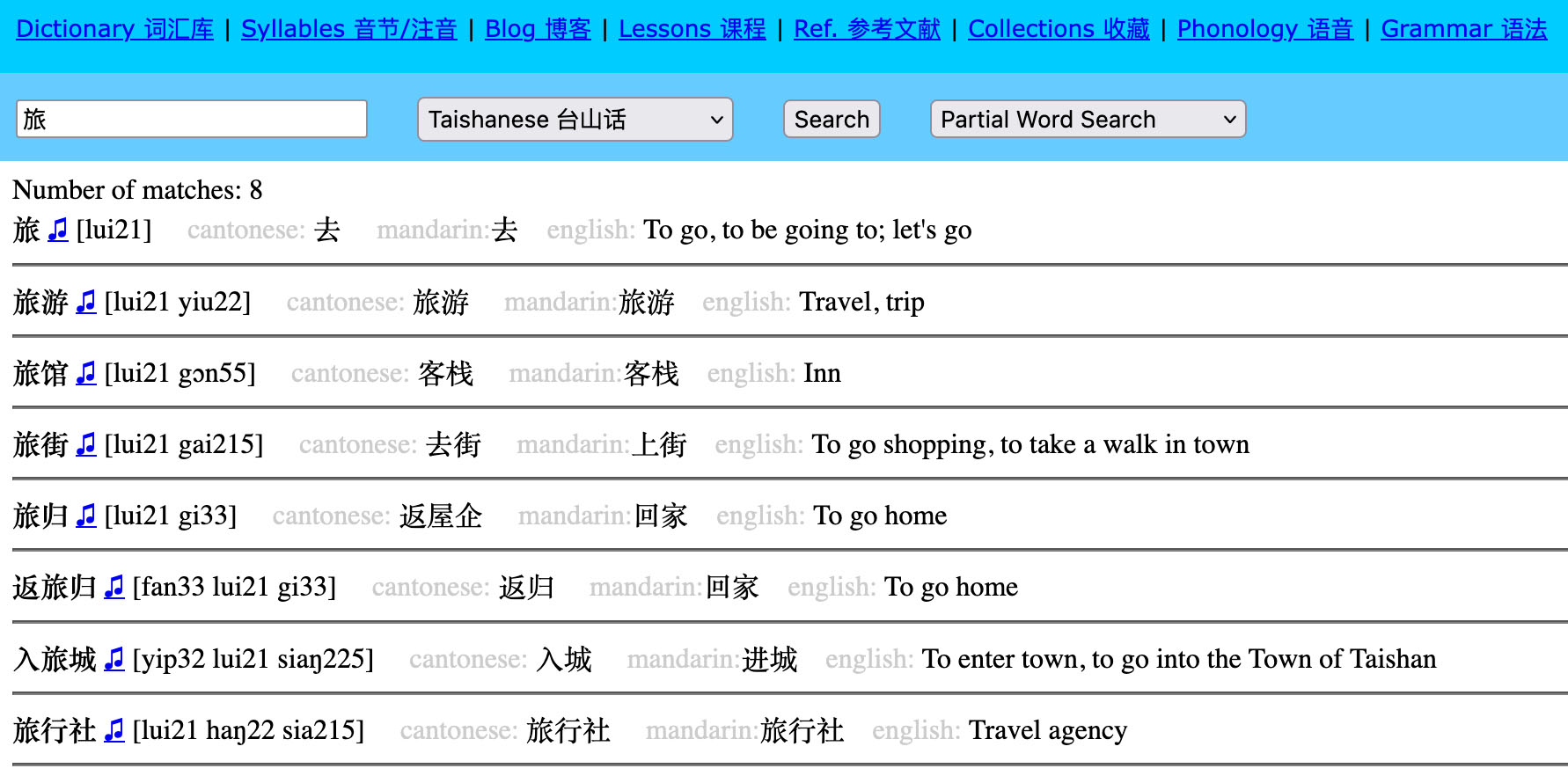
- Format: Website
- Features: Dictionary, word lists, articles
- Definitions: English
- Phonetic guides: Taishanese, Cantonese, Mandarin
- Audio pronunciation: Taishanese
- Price: Free
- Launch date: 2013
- Creators: Engineer and blogger Stephen Li
Taishanese Language Home 台山话资源网 is “a searchable database with audio pronunciation intended for general usage as well as to facilitate linguistics research.” This Chinese-to-English dictionary (with audio clips for pronunciation) is a work-in-progress. Its creator, Stephen Li, also runs a blog called Toisanese Chop Suey 台山话杂碎: A Tribute to My Mother Tongue.
Wu language group dictionary (includes Shanghainese and Suzhounese)
吳語學堂 ⭐️

Format: Website
- Features: Dictionary, map
- Definitions: N/A
- Phonetic guides: Multiple Wu languages
- Audio pronunciation: Shanghainese (and sometimes others)
- Price: Free
- Launch date: 2016
- Creators: Language enthusiasts across China (see origin story)
吳語學堂 [Wu Language Academy] is an expansive resource that’s working to capture an entire language group under one roof. It might not have as many features (or audio clips) as some of the other dictionaries, but its breadth of coverage, as shown in the screenshotted map above, is an astounding achievement all on its own.
Wiktionary, a dictionary for many languages
Wiktionary
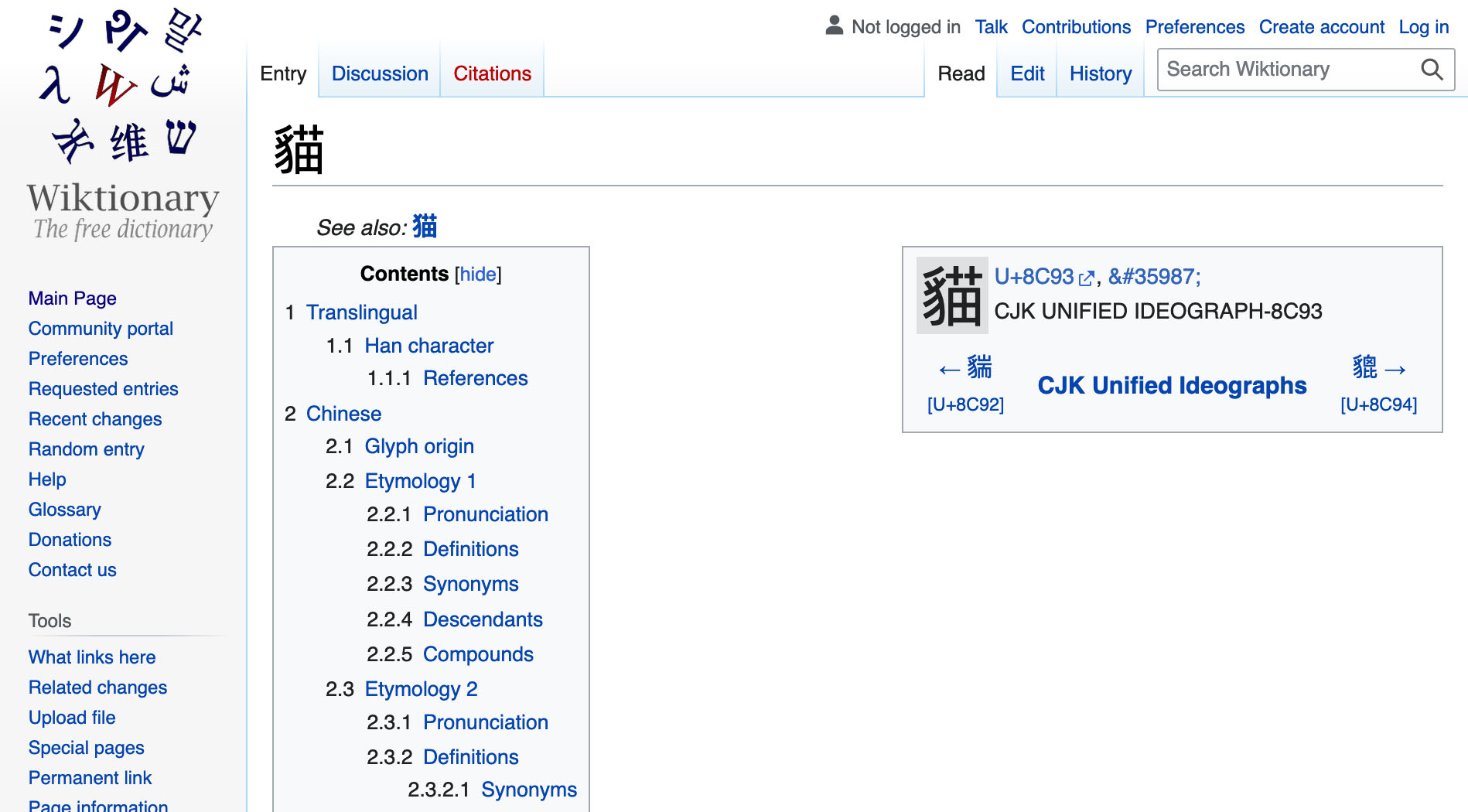
- Format: Website
- Features: Dictionary, wiki
- Definitions: English
- Phonetic guides: Mandarin, Cantonese, Hakka, Jin, Min Bei, Min Dong, Min Nan, Wu…
- Audio pronunciation: Mandarin
- Price: Free
- Launch date: 2002
- Creators: Wikimedia Foundation and volunteers
Because of its breadth of coverage, Wiktionary is a great place to start. But because it rarely ever cites its sources for pronunciation data, it’s hard to figure out how verified the information is or what the intent of the volunteer editors/writers is. Having said that, the quality of data on there is still very high in our experience, so we recommend using it in conjunction with at least one other source.
This article was first cross-posted to both 88 Bar and the Hanmoji Puzzles newsletter, and was co-written by Jason Li and An Xiao Mina.